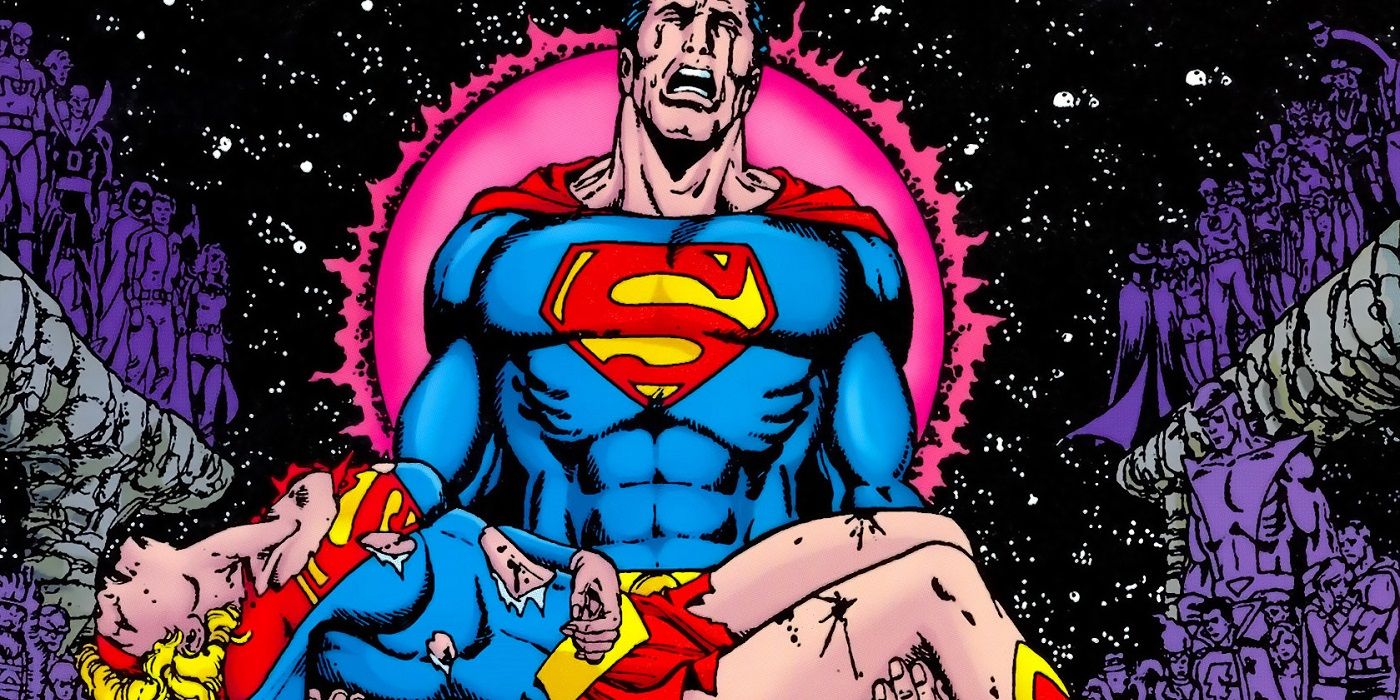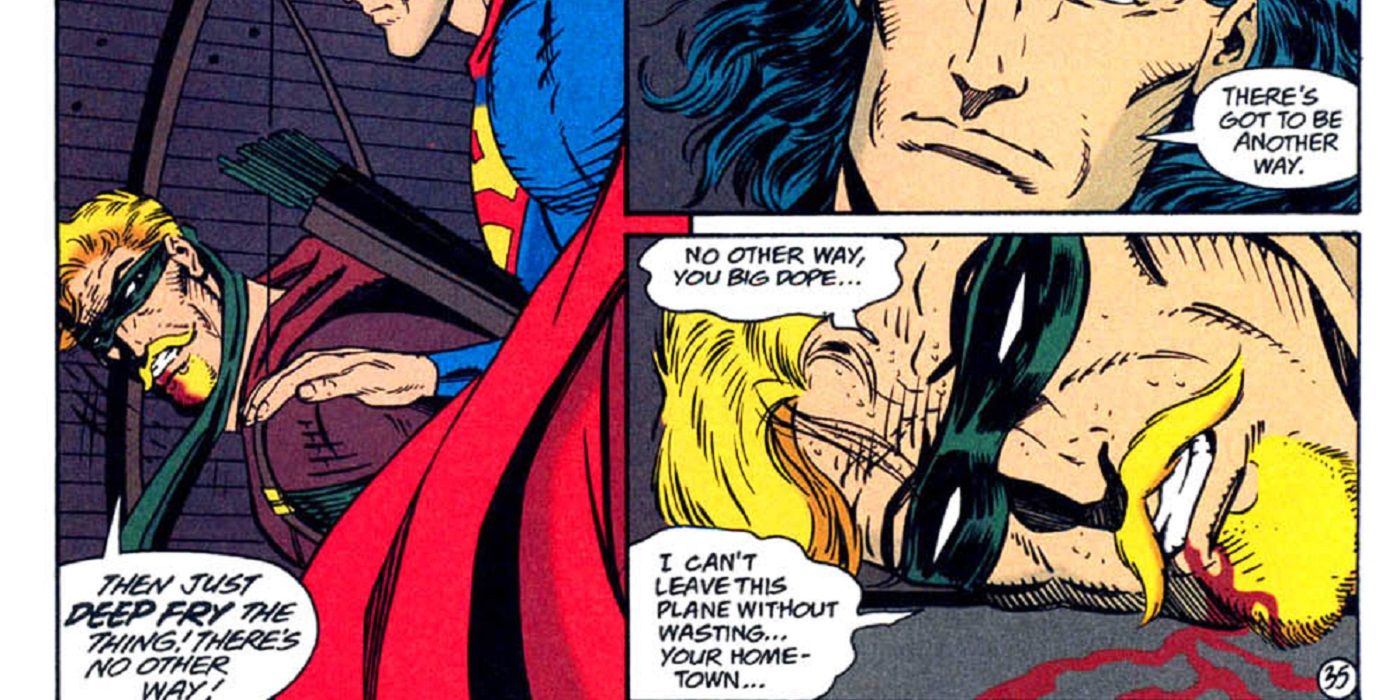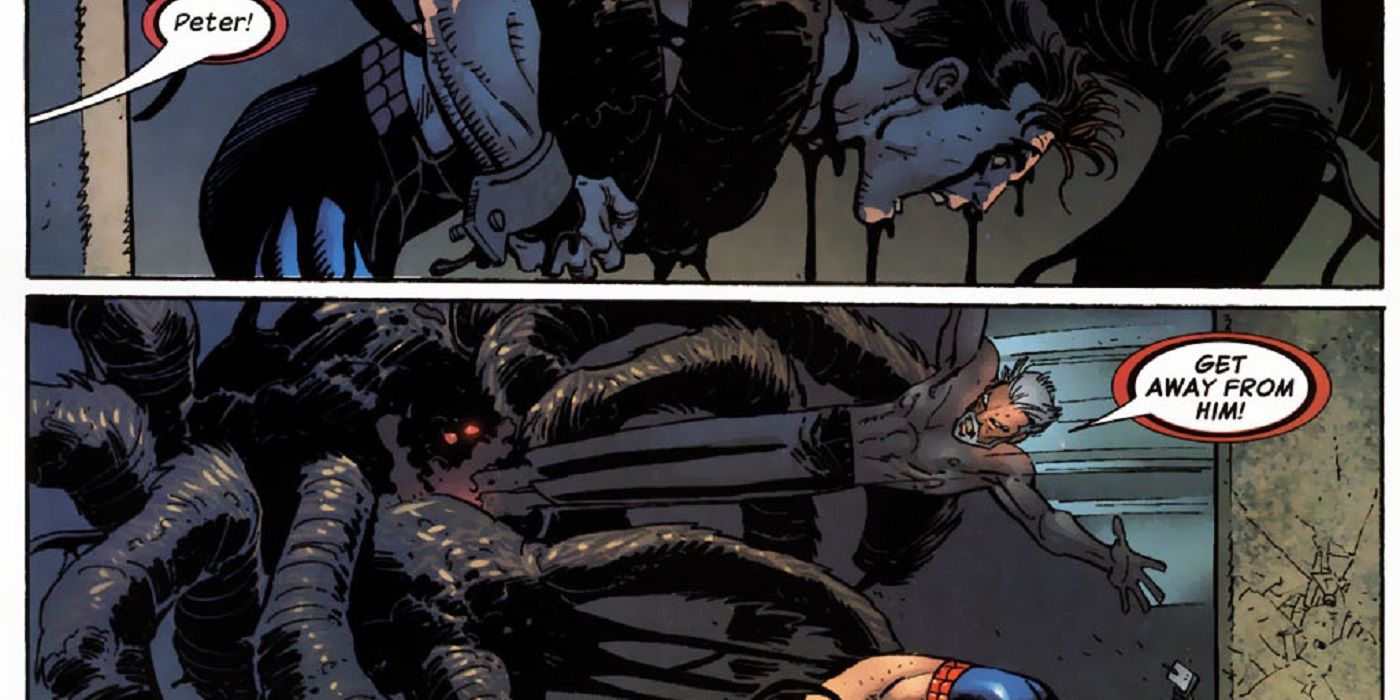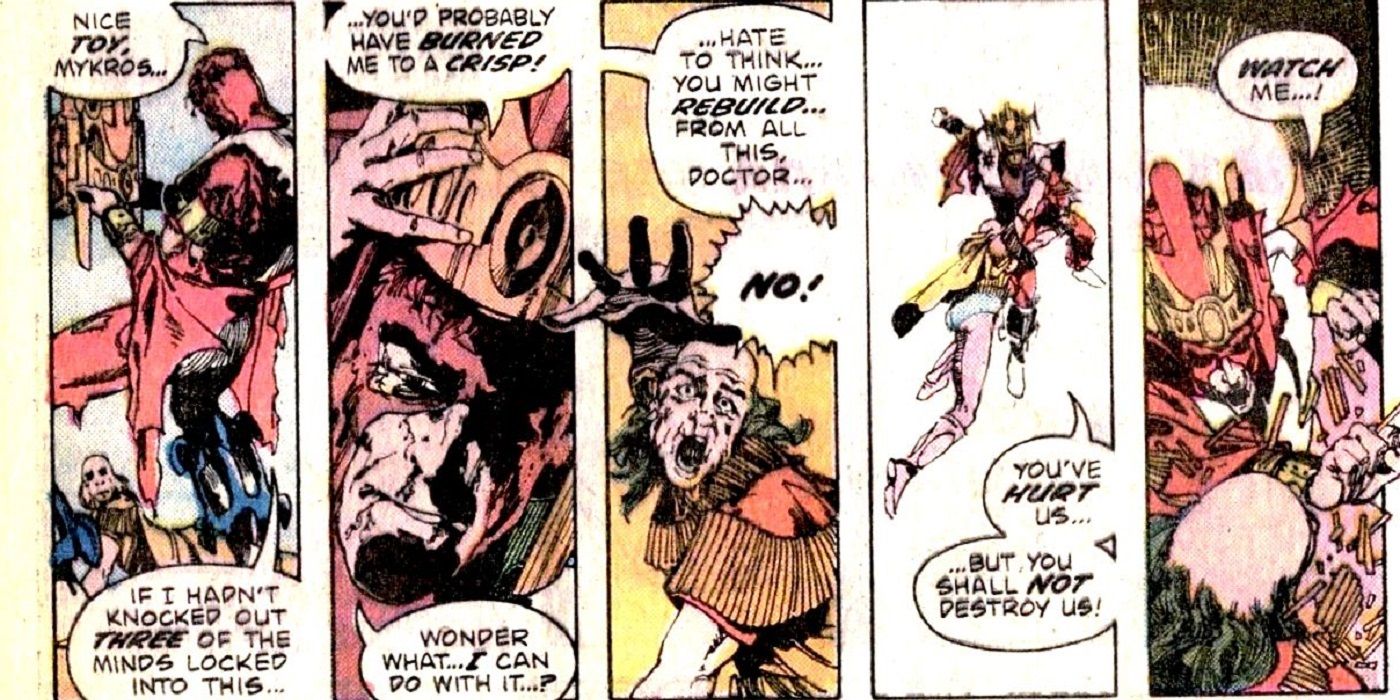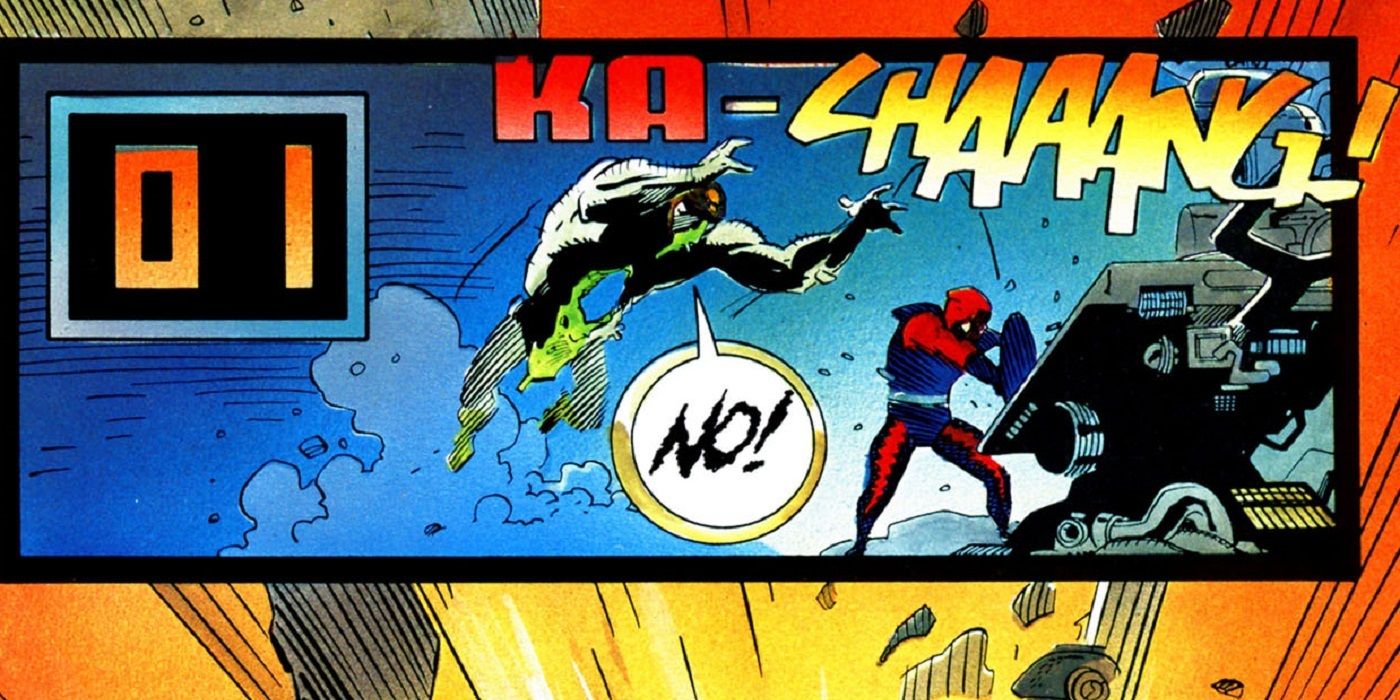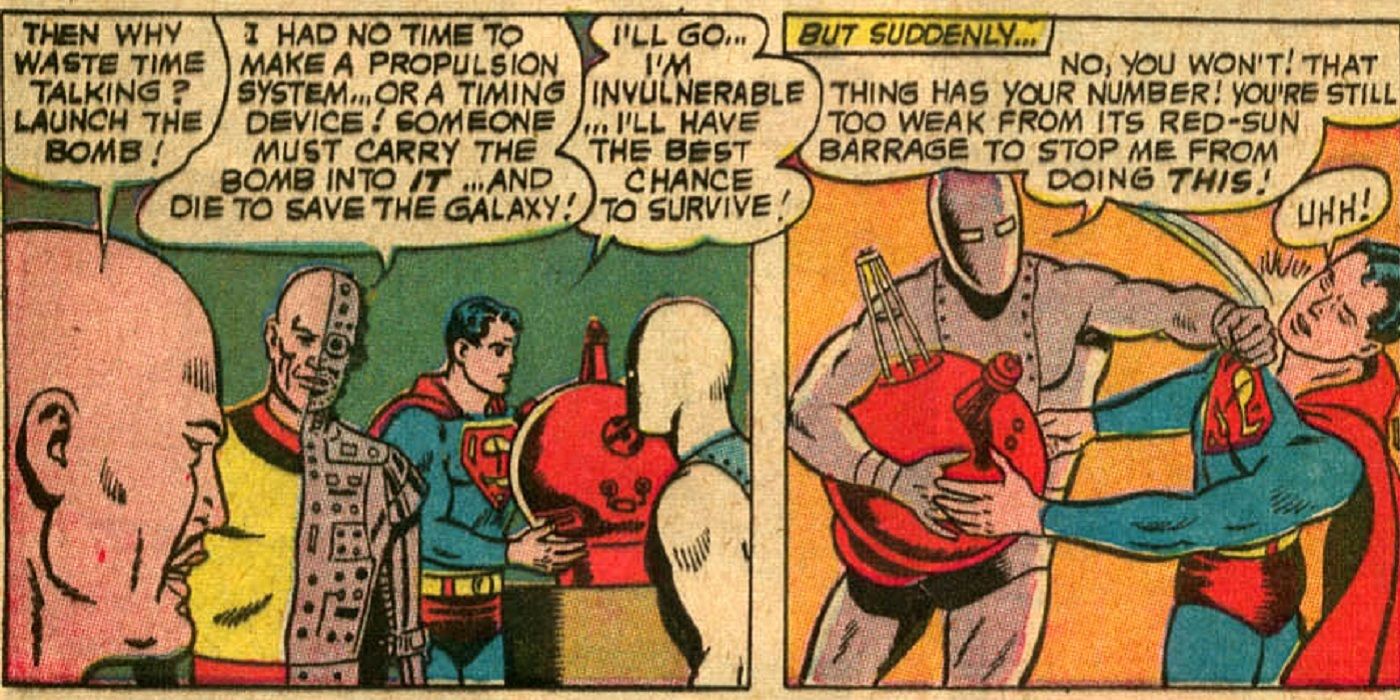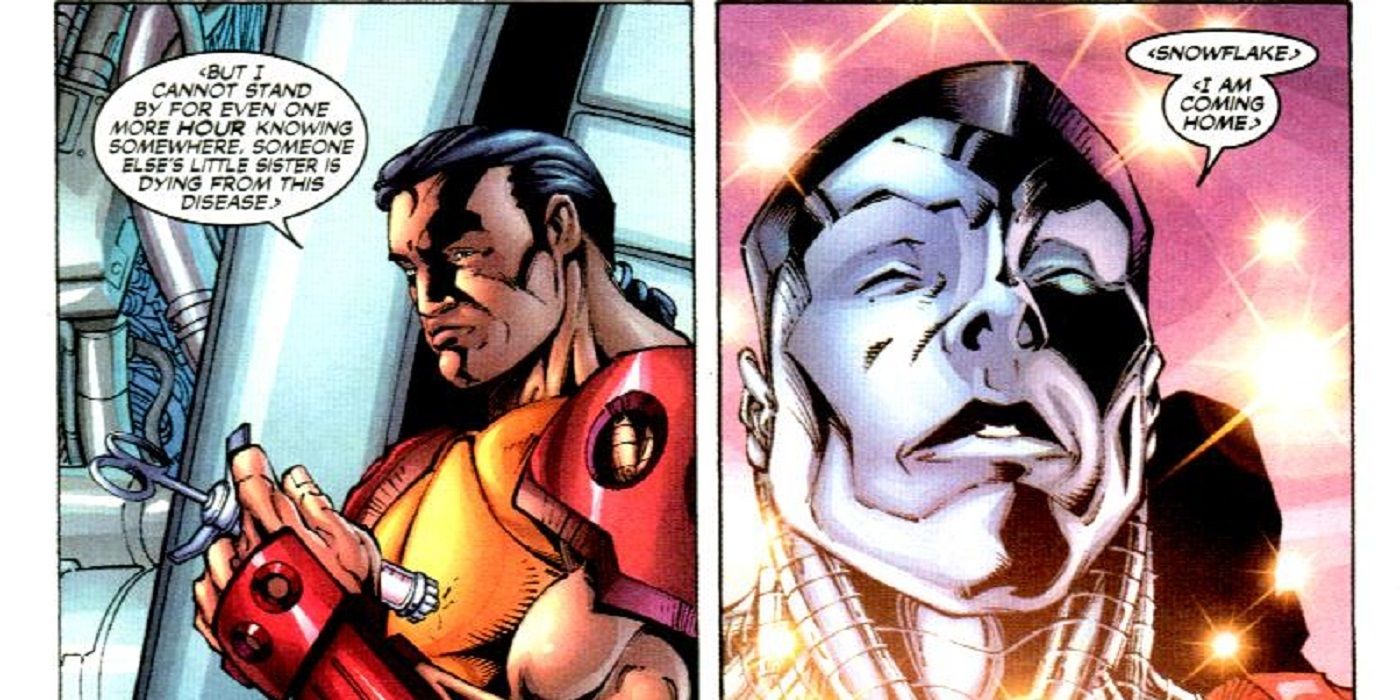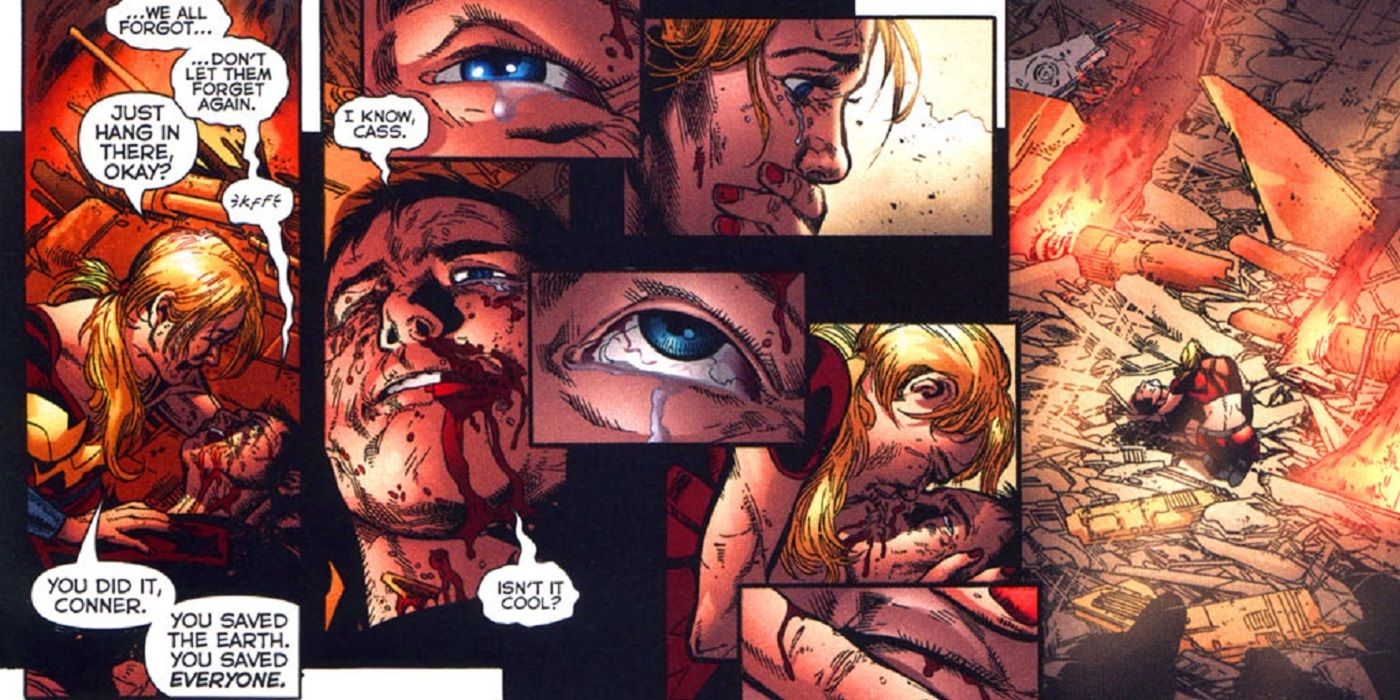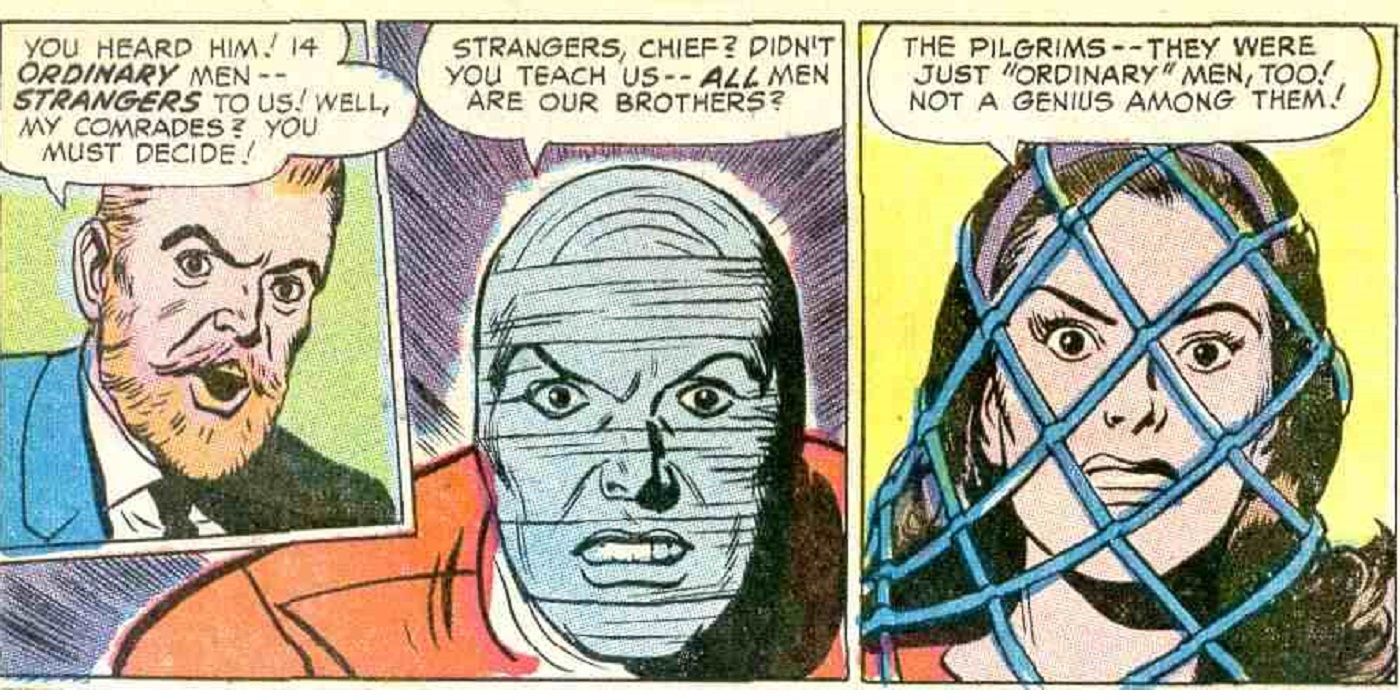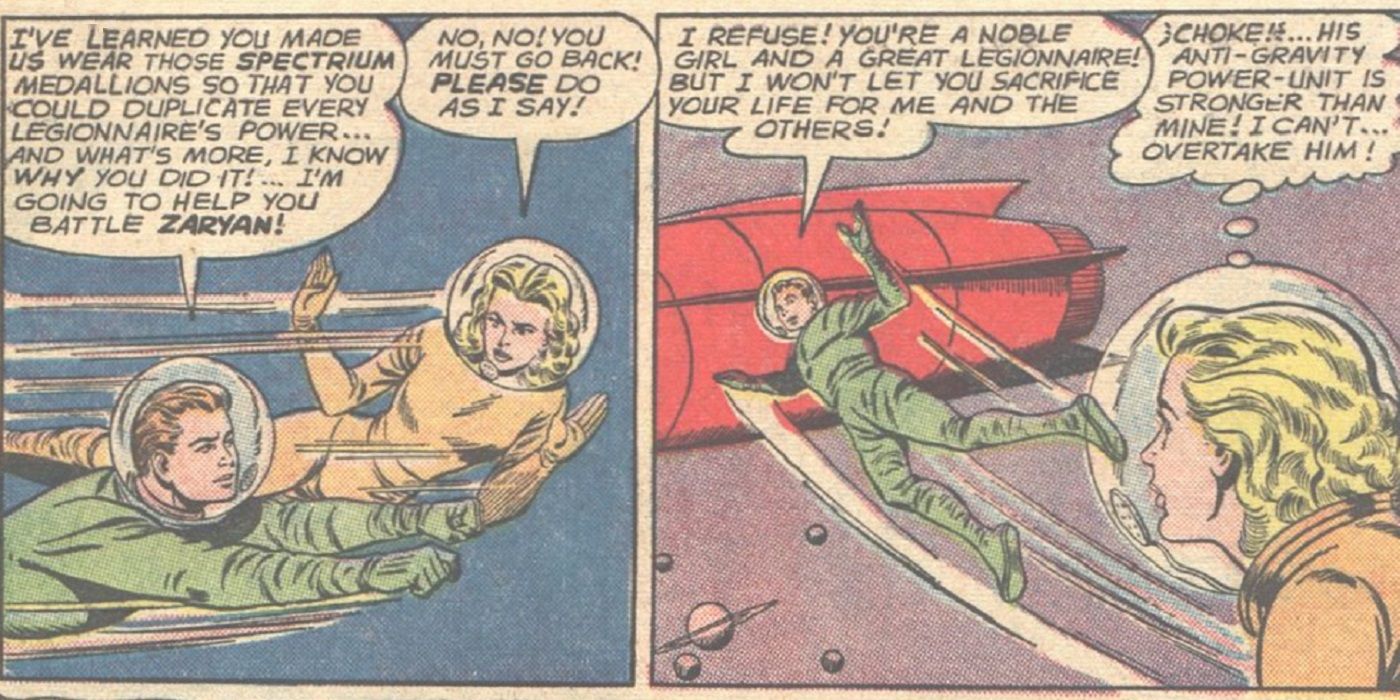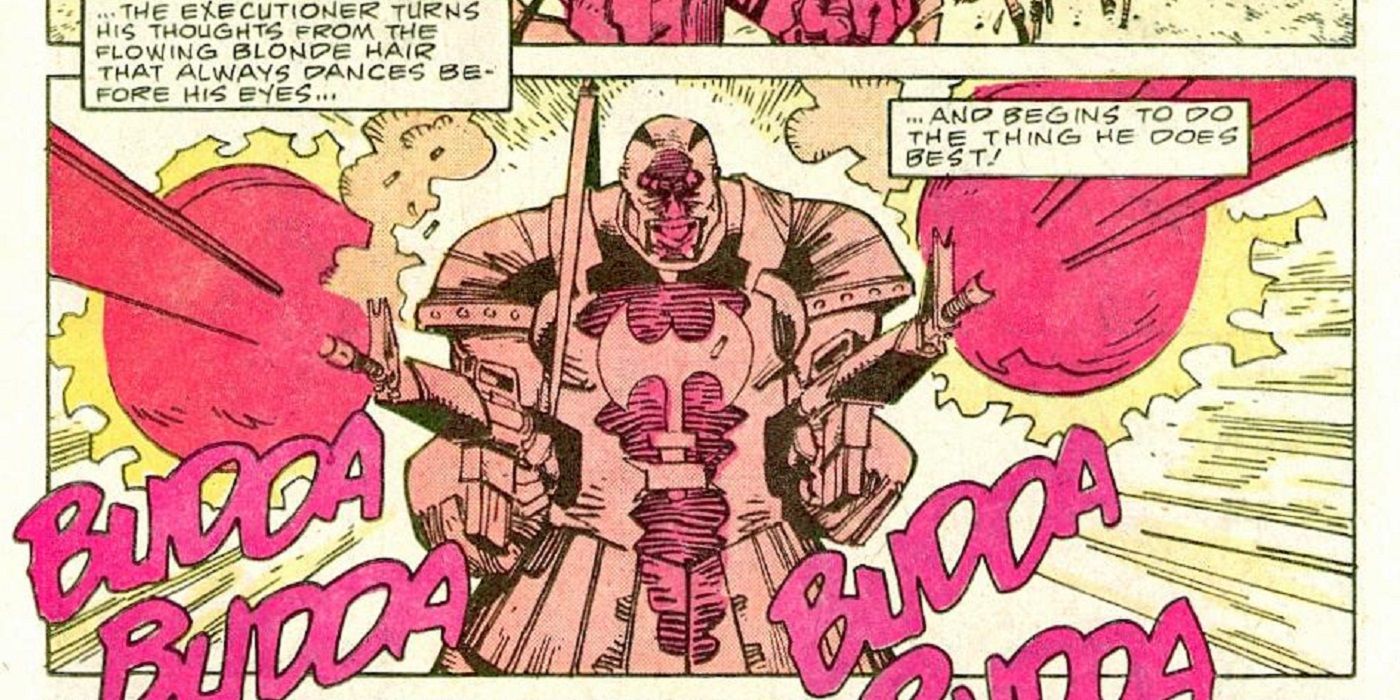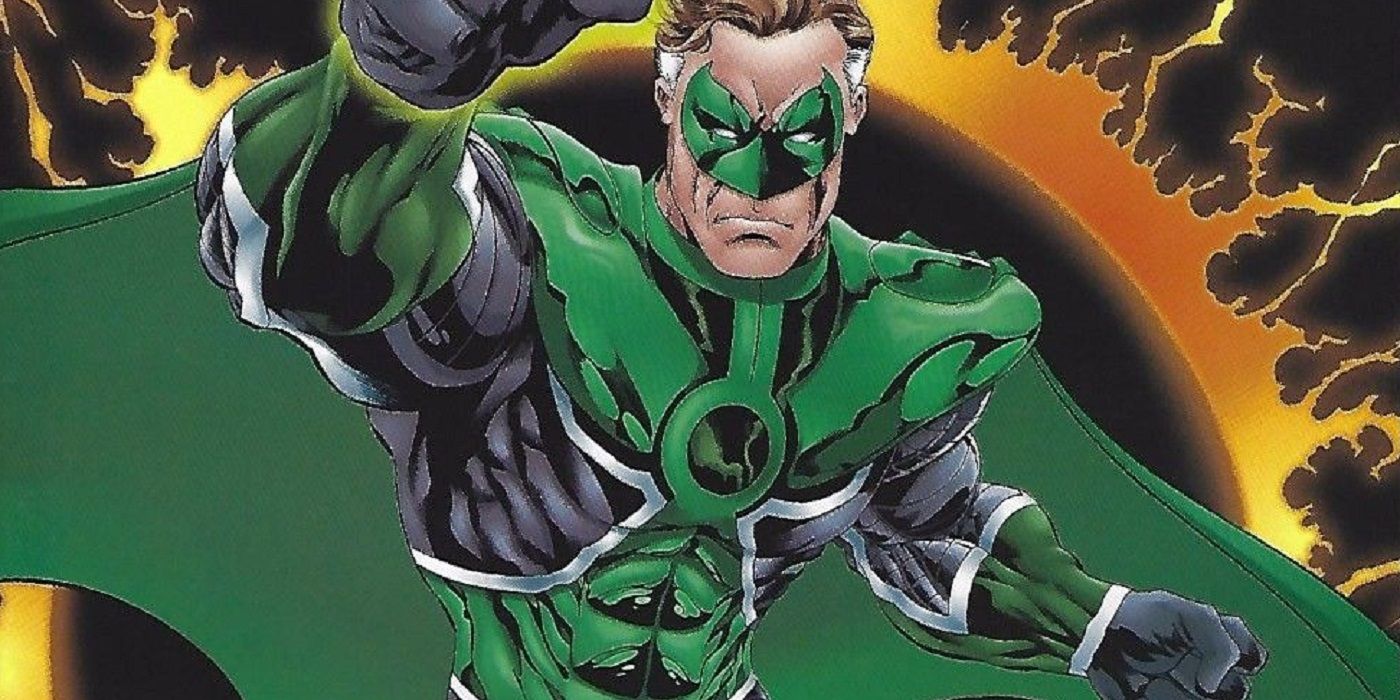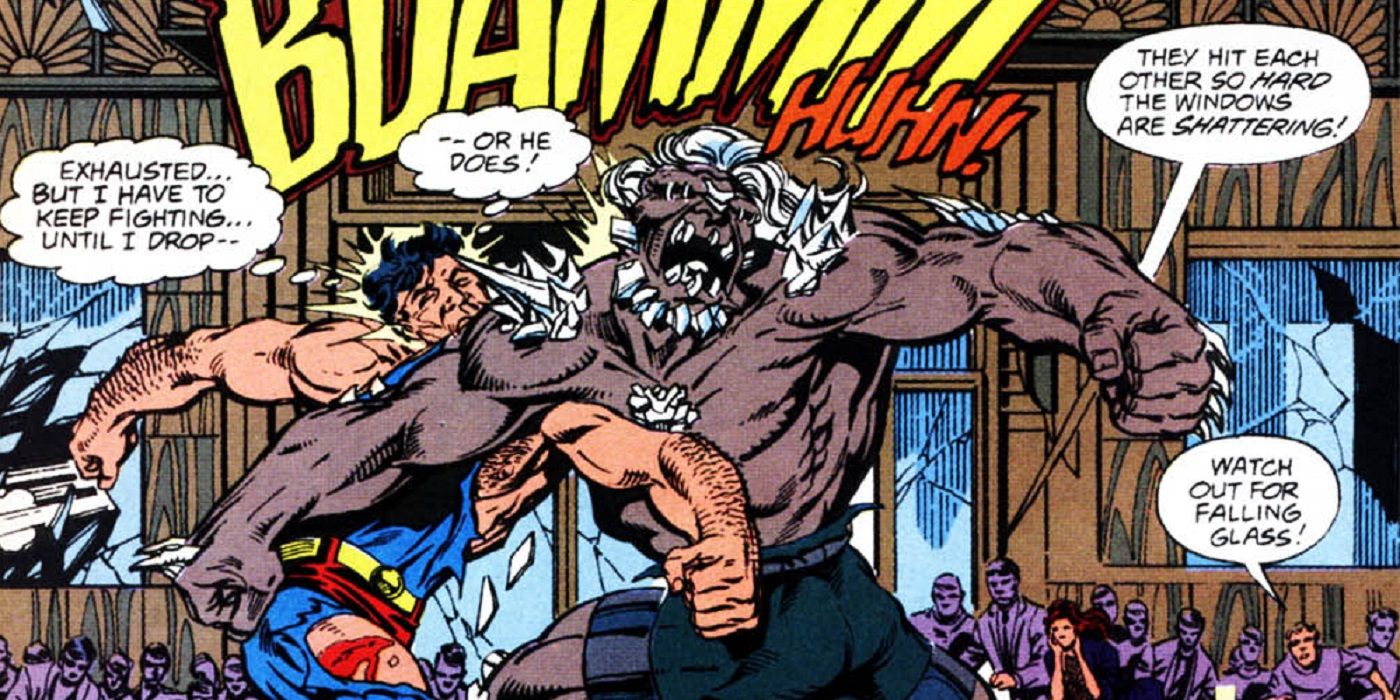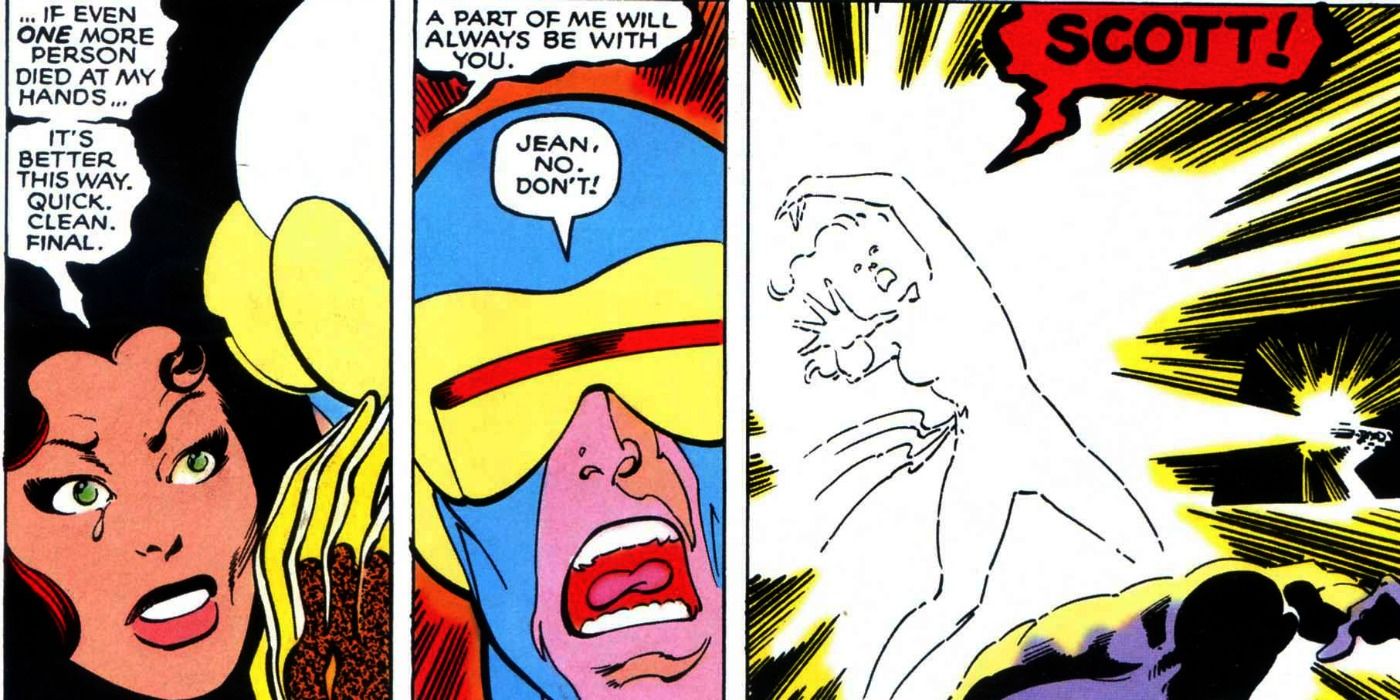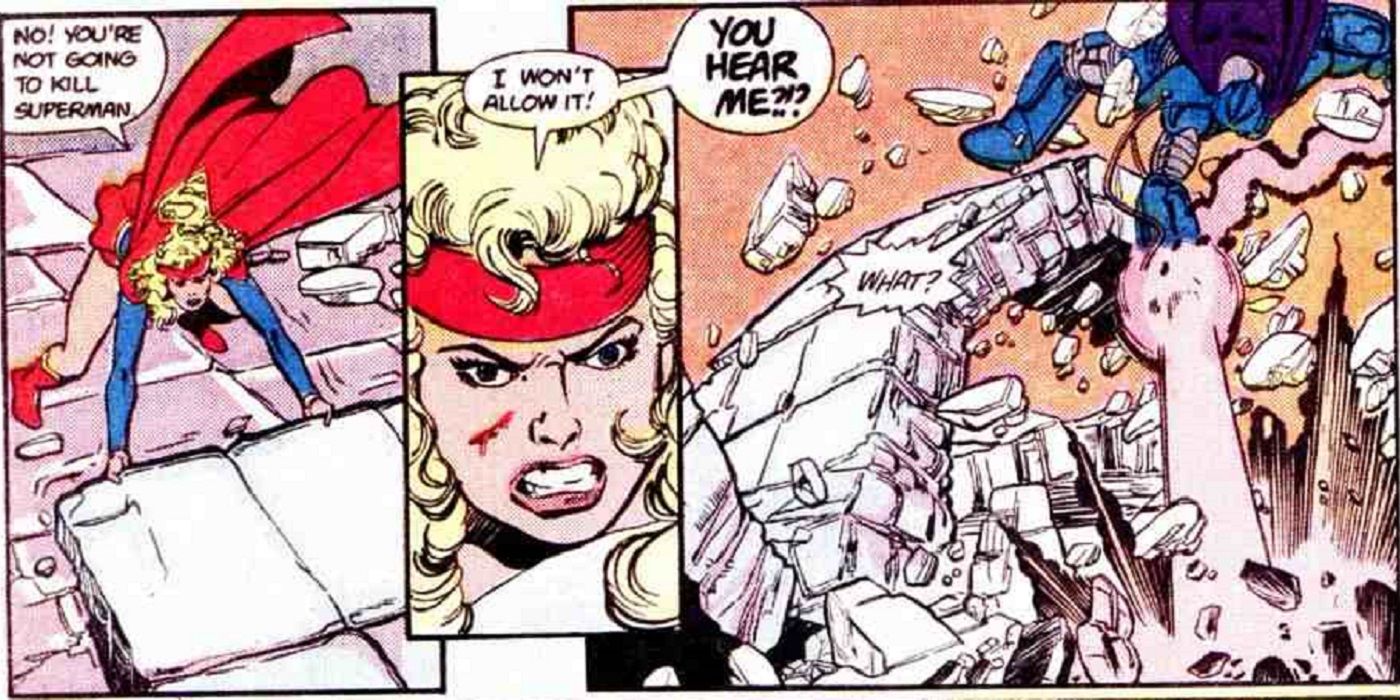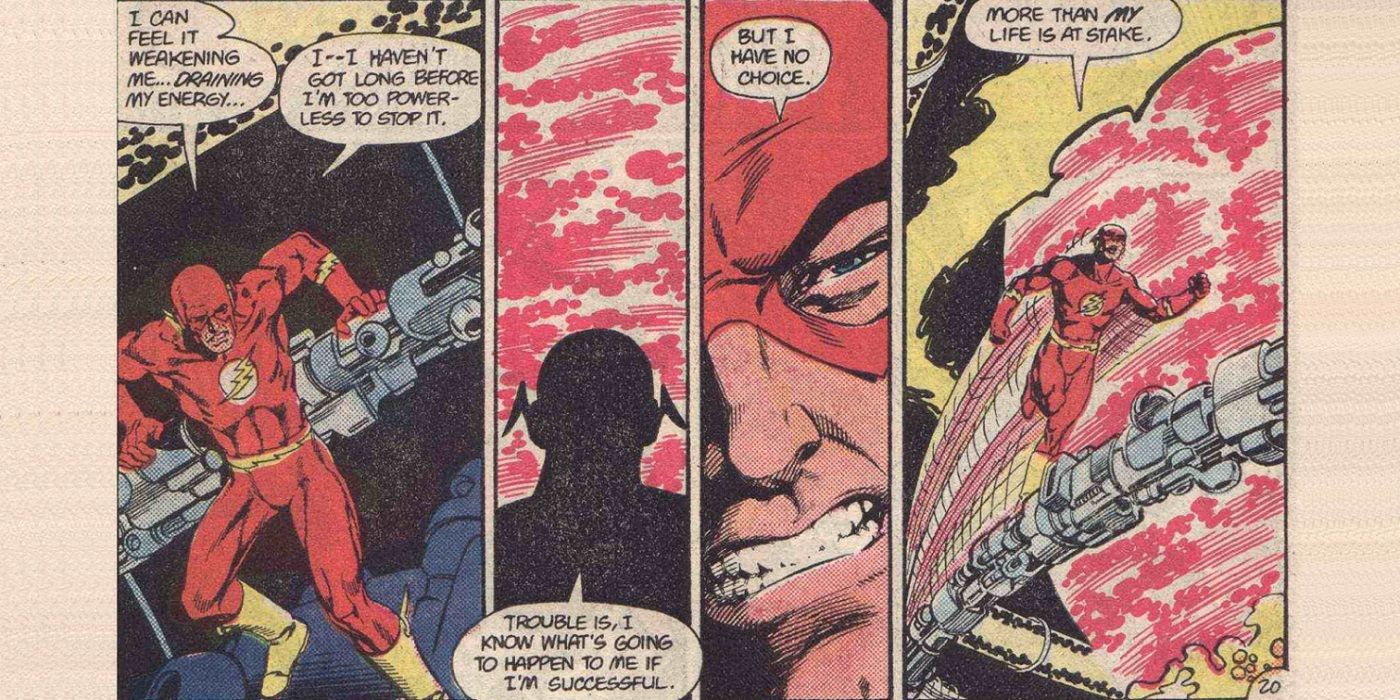Something that has clearly changed in the world of superheroes over the past few decades is that death in a superhero comic is no longer an extremely rare occurrence. On the contrary, it has almost gotten to the point where it is commonplace. Heck, both companies have specifically had stories ("Blackest Night" and "Marvel: The End") that explicitly discuss how often comic book characters both die and come back to life.
RELATED: 10 Reasons Death In Comic Books Is Meaningless
Therefore, when death is so commonplace, it is hard for a superhero's death to stand out. Especially when so many deaths are of the "shockingly out of nowhere" variety, where the hero is not even given the chance to die while saving anyone (think Goliath in "Civil War" or Blue Beetle in "Countdown to Infinite Crisis"). However, over the years a number of heroes have had traditionally "heroic" deaths, where their final moments truly meant something. Here, we count down the 15 greatest examples of comic book characters having heroic deaths.
15 Green Arrow
By the time "Green Arrow" #100 had come out, Chuck Dixon had already brought Oliver Queen's son, Connor Hawke, into the series and had him playing a prominent role in the book (with a plotline distinct from Oliver's). This was during an era when superheroes were being replaced by younger heroes, so people were expecting an exit for Green Arrow in "Green Arrow" #100, especially when the ending set up a scenario where Superman might be responsible for Oliver losing an arm, a la Oliver's set-up in the famed Frank Miller story, "The Dark Knight Returns" (where a one-armed Oliver helps Batman take down Superman).
Instead, Dixon zigged where we thought he would zag in the issue (drawn by Jim Aparo and Gerry Fernandez). Oliver had gotten involved with an eco-terrorist group, ostensibly to bring them down from within, but he found himself on a plane headed for Metropolis with his arm stuck in a bomb. If he did nothing, the plane would crash in Metropolis and the bomb would explode. If he removed his arm, he would explode. Superman suggested using his heat vision to remove Oliver's arm and leave it attached to the bomb, but instead, Oliver decided to detonate the bomb early, protecting the citizens of Metropolis but killing himself. This is a little low on the list because, as noted, Oliver didn't have to die. There was another way out of the situation.
14 Ezekiel
Ezekiel Sims turned Spider-Man's life upside down when he first contacted Peter Parker and revealed that not only did Ezekiel know Peter's secret identity, but also how he got his superpowers. According to Ezekiel, the radioactive spider that bit Peter and gave him his powers wasn't because of radiation, but rather the spider itself had the power and radiation only caused it to pass its power along before it dying. Ezekiel warned Spider-Man about the coming of Morlun, a being who feasted on people with powers like Spider-Man and Ezekiel.
Spider-Man was able to defeat Morlun, but then another being who hunted spider-beings like Ezekiel and Spider-Man showed up called Shathra. Ezekiel first tried to sacrifice Peter to Shathra, but ultimately realized that Peter had actually lived the heroic life that Ezekiel should have led, and thus it would be wrong to let Peter die instead. Thus, Ezekiel freed Peter and died in his place. For a guy whose background was specifically about avoiding the great responsibility that came with his great power, it was an impressive sacrifice. A little less impressive since he almost let Peter die in his place, but still impressive.
13 Manhunter
In the early 1940s, when Joe Simon and Jack Kirby came to DC Comics after leaving Timely Comics over a contract dispute involving their creation, Captain America, they revamped a few characters, including introducing a new version of an established hero known as Manhunter. They did the series for a couple of years, but the Paul Kirk incarnation of Manhunter pretty much went into limbo when his series ended towards the end of World War II. 30 years later, Archie Goodwin and Walter Simonson brought the character back in an acclaimed 1973 back-up series in the pages of "Detective Comics."
Kirk had died on a safari but found himself brought back to life by a mysterious group known as the Council. As it turned out, the Council had cloned the perfect Manhunter, Kirk, to create a society of assassins. Kirk couldn't live with the idea that his body was being used for evil like this, so he devoted his life to taking down the Council, working with a few other like-minded operatives. In the end, in "Detective Comics" #443 (in a team-up with Batman), Manhunter decided to blow up the Council to stop their threat for good, even though it meant dying himself.
12 Forager
In the classic Jim Starlin/Mike Mignola/Carlos Garzon mini-series, "Cosmic Odyssey," incarnated aspects of the Anti-Life Equation were trying to destroy four specific planets. If at least two of the four planets were destroyed, then the entire galaxy would collapse on itself. Okay, fair enough. However, the New Gods decided the best way to solve this was to get just enough superheroes so that each planet would get just two heroes to protect it!
Not only that, but Earth was given "only" Batman and a bug-like creature known as Forager. Forager's bug-like race were looked down upon by most New Gods, including Orion, who is somewhat disgusted that Forager was even allowed on this important mission. One of the other three planets was destroyed, so if Batman and Forager failed to save Earth, not only will Earth be destroyed, but so will the rest of the galaxy!
Things were not looking good when the Aspect assigned to Earth had a massive bomb set to explode, but Forager managed to get in there and destroy the bomb, even though he knew destroying it would lead to his death. When the other heroes arrived later, Orion was dismissive of Forager once again, so Batman got right in his face to defend the honor of the being who sacrificed himself to save the galaxy.
11 Ferro Lad
When Jim Shooter took over writing the "Legion of Super-Heroes" feature in "Adventure Comics" in the mid-1960s, he tried to make the comics stand out from typical DC Comics of the era and be more like Marvel Comics, which was becoming more and more popular. One of the ways that Shooter came up with to make the book stand out was to have a member of the Legion actually die in battle. The choice for the hero to die was made when Shooter's editor squelched Shooter's original plans for the character, so he instead figured he might as well have him be the one who dies.
In "Adventure Comics" #352-353 (art by Curt Swan and George Klein, over Shooter's own layouts), the Earth was in danger of being destroyed by the Sun-Eater. The Legion actually had to enlist the villainous Fatal Five to help save the planet (the Fatal Five was Shooter's take on the then-popular film, "The Dirty Dozen", a film that Shooter had not been allowed to see because he was too young for it). In the end, though, they all failed. It came down to someone needing to deliver a bomb inside the Sun-Eater. Superboy normally was the guy for a plan like that, but the Sun-Eater's powers were especially deadly to a sun-powered hero like him, so Ferro Lad stepped in and sacrificed himself in Superboy's place.
10 Colossus
Throughout the 1990s, one of the longest running "X-Men" subplot was the Legacy Virus, a deadly disease that specifically targeted mutants. One of the most famous mutants to die from the disease was Illyana Rasputin, the younger sister of longtime X-Men member, Piotr Rasputin, better known as Colossus. In "Uncanny X-Men" #390 (by Scott Lobdell, Salvador Larroca and a bunch of inkers), the X-Men's resident scientist, Hank "Beast" Mccoy, finally discovered a cure for the Legacy Virus! However, Beast realized that the way that the cure would work was that a mutant would have to use their power to activate the cure, but in doing so, the mutant would die. He naturally put the cure aside, planning to work on it further so that it would not kill the person who activated it.
Colossus, meanwhile, could not live with the idea of waiting while mutants were out there dying. He didn't want others to have to deal with the same pain he did when he lost his sister, so he broke into Beast's lab and activated the cure by injecting himself and then using his mutant power to turn into a giant metal man. Colossus ended up saving millions of lives with his sacrifice.
9 Superboy
Conner Kent, the hero known as Superboy, was having a tough time of things in the events leading up to "Infinite Crisis" (an event by Geoff Johns, Phil Jimenez and Andy Lanning), having discovered that not only was half of his DNA supplied by Lex Luthor, but also Luthor had the ability to turn Superboy into a sleeper agent against his fellow Teen Titans. Meanwhile, the much more powerful Superboy-Prime had shown up on Earth along with Alexander Luthor (alternate-reality versions of Superboy and Luthor). They had both survived the "Crisis on Infinite Earths" and had been driven insane watching the heroes "ruin" the Earth that they had left for them.
Superboy-Prime slaughtered a number of Superboy's Titans teammates while Luthor had built a tower that would tear Earth apart in an attempt to create a "perfect" world. The Earth's heroes tried to attack Luthor and Superboy-Prime, but Prime was too strong. Ultimately, Superboy realized that he could use Superboy-Prime's own strength against him, by forcing Prime into destroying Luthor's tower. Sadly, this killed Conner in the process, but he managed to save the Multiverse.
8 Doom Patrol
When Arnold Drake came up with the premise for the Doom Patrol, the whole idea behind the characters was that they were the world's strangest heroes, as they involve a guy with his brain in a robot body (Robotman) and another guy without a real body entirely (Negative Man). So when it came time for their title to be canceled in 1968, he decided that their final issue should be unlike any other of the era. The world's strangest heroes had one of the strangest final issues of the Silver Age!
In the issue (drawn by "Doom Patrol" co-creator, Bruno Premiani), the villainous Madame Rouge essentially takes care of all outstanding business. After getting revenge on a villain who made her have split personalities again, she teamed up with another Doom Patrol villain, Captain Zahl, to capture the team. He offered the Doom Patrol a choice: either they die or a small fishing village with just 14 men in it would die. He knew that they would be willing to sacrifice themselves to save a lot of people, but certainly not 14 strangers, right? Wrong! The Doom Patrol insist that he kill them instead, and they died with defiant smiles on their faces.
7 Lightning Lad
Superhero death in general was very rare going into the 1960s, so it was quite a shock to see a member of the Legion of Super-Heroes pay the ultimate price in 1962's "Adventure Comics" #304 (by Jerry Siegel and John Forte, part of Siegel's triumphant return to the world of "Superman" in the early 1960s). Saturn Girl had used her mental powers to get her teammates to elect her leader of the Legion. She then promptly began to use a special device to steal all of their powers from them. Naturally, like most Silver Age "Legion" stories, they presumed that she was just a jerk or, worse, simply evil.
Instead, it turned out that she had discovered that an alien race had discovered that a Legionnaire would die while using their power against the evil space pirate, Zaryan, so she figured that if she stole all of her teammates' powers, then the only person who could possibly die was her. What she didn't know was that Legion member Mon-El saw everything from the Phantom Zone (he was temporarily stuck there while the Legion developed a cure to his lead poisoning) and he told Lightning Lad. Lightning Lad got his powers back and stepped in to sacrifice himself instead of Saturn Girl. A very shocking death for the early 1960s!
6 Skurge
Skurge the Executioner had been one of those reliable villain characters for years in the Marvel Universe. You know, the type that are just powerful enough to be threats, but not so powerful that it is a big deal for you to use them. He was an Asgardian who was, in effect, the henchman for the villainous Asgardian sorceress, the Enchantress. He adored her and followed her around like a puppy.
During the great battle against Surtur, Enchantress and Skurge fought alongside their fellow Asgardians, putting aside their past differences for the good of their home. Once that battle finished, Enchantress became romantically interested in Heimdall. Skurge needed something to take his mind off the Enchantress, so he offered to go with Thor and Balder on a rescue mission to Hel. The heroes succeeded in their goal, but Hela's forces were soon upon them. Someone had to stay behind to cover the exit for the others. Thor, naturally, volunteered, but Skurge knocked him out and took his place at the bridge. The odds were enormous, but Skurge succeeded, though he died in the process, becoming a hero for the first time in his life just as it ended. Stunning work by comic book legend Walter Simonson.
5 Hal Jordan
After the events of "Emerald Twilight," when Hal Jordan had destroyed the Green Lantern Corps (and killed some of his friends) in an attempt to gain enough power to bring his hometown of Coast City back to life after it had been wiped out by the Cyborg Superman, Hal Jordan became the villain known as Parallax. He tried to restart reality in "Zero Hour," but was stopped. He survived that storyline and was sort of just hanging around, occasionally popping up to cause some trouble.
This took us to "Final Night," which involved a Sun-Eater that had come to Earth and had drained the Sun of its power. Thus, the mini-series was mostly about exploring how Earth's heroes deal with a threat that they can't stop and how do they deal with the final days of Earth? Ultimately, the heroes had a plan that they thought might work, but would require someone to sacrifice themselves to reignite the Sun. Hal Jordan suddenly showed up, instead, and used all of the energy that he had absorbed when he destroyed the Central Green Lantern Corps Battery to re-ignite the sun, thus dying as a hero.
4 Superman
In the "Death of Superman" storyline, a powerful being known as Doomsday shows up and begins cutting a path of destruction towards Metroplis. The Justice League show up and tries to slow him down, but he tears right through them, hitting Fire so hard that she lost her powers! The only person who could stand in Doomsday's way was Superman and thus began an epic battle that lasted over a number of issues.
Superman eventually realizes that he and Doomsday are both so exhausted from their fight that the only way he is going to stop Doomsday is by killing him. Willing to put his life on the line, Superman throws every last reserve of strength into a final blow that takes both him and Doomsday down. Superman's sacrifice is one of the most famous comic books of all time.
Interestingly, the writers chose a unique way to showing how the battle between Superman and Doomsday was counting down to the hero's death. Each issue would have pages with fewer panels on them. So one issue would have four panels to a page, the next would have three panels per page, then two, until the final part of the story, "Superman" #75, written and drawn by Dan Jurgens (with inks by Brett Breeding), was just full-page panels.
3 Phoenix
In "X-Men" #100, the X-Men are in a damaged space ship headed for Earth. The damage to the craft has made it so that whoever flies it will be exposed to deadly cosmic radiation. Jean Grey decides to steal the knowledge of how to fly the plane from the brain of a scientist aboard and then uses her telekinetic powers to seal herself off and fly the plane. As it turned out, she instead became the Phoenix, a powerful cosmic being, due to whatever happened to her alone in that cockpit.
Over time, Jean slowly lost control of her cosmic powers, ultimately becoming Dark Phoenix. Despite regaining control, this led to the Shi'ar and the X-Men fighting over whether or not she should live. In the end, though, Jean could feel Dark Phoenix returning, so she decided to kill herself instead, for the good of the universe.
Later on, we learned that the Phoenix was a separate being than Jean and had taken her place back in "X-Men" #100. In some ways, that makes the death of the Phoenix in "X-Men" #137 (by John Byrne, Chris Claremont and Terry Austin) even more heroic, as a cosmic being just copying the behavior of Jean Grey was noble enough to sacrifice itself!
2 Supergirl
In "Crisis on Infinite Earths" #7 (by Marv Wolfman, George Perez, Dick Giordano and Jerry Ordway), the Anti-Monitor had greatly succeeded in his plan to destroy the Multiverse, as the Multiverse was down to just five Earths. The Anti-Monitor then came up with a device powered by stellar energy that he could use to destroy these remaining Earths. A group of some of the most powerful heroes on Earth showed up to attack the Anti-Monitor and destroy his weapon. Among the heroes were Superman, his cousin Supergirl and a brand-new hero, Doctor Light, who was still getting the hang of being a superhero.
During the battle, the Anti-Monitor and Superman went one-on-one and Superman was badly beaten. Doctor Light was amazed that Supergirl stepped in and saved her cousin, deciding that Superman was not going to die today. Doctor Light couldn't believe the heroism that she saw in this young woman. It inspired her to become a true hero herself. Supergirl took on the Anti-Monitor and managed to destroy his weapon, but in the process, she was killed. She managed to save her cousin, though, which was her main heroic goal (and, of course, all the aforementioned Earths).
1 Flash
In the previously mentioned event's next issue (by Wolfman, Perez and Ordway), the Anti-Monitor went to his back-up plan, an anti-matter cannon, to destroy the remaining Earths. This time around, it was Barry Allen, the Flash, the fastest man alive, who had to stop him. As heroic as Supergirl's death was, she didn't 100% know that she was going to die when she went into her battle with the Anti-Monitor. She knew it was a very strong possibility (since she just saw what the Anti-Monitor did to her cousin), but she still hoped to make it out of the battle alive.
That is the difference between her death and Barry Allen's: Barry knew that the only way he could stop the anti-matter cannon was to run so fast that he would force its energies back onto itself, a process that Barry knew would kill him in the process (since the anti-matter energy was draining Barry as he was pushing it back upon itself). Barry Allen was a wonderful hero, though, so he pushed himself to the limit (and beyond) to save the Multiverse. Making it even more tragic was that he was completely aware throughout the process, constantly challenged by the dark thoughts of what he was doing to himself for the good of others. Very touching stuff, which is why it is the most heroic superhero death of all-time!
Which superhero do you think had the most heroic death? Let us know in the comments!

